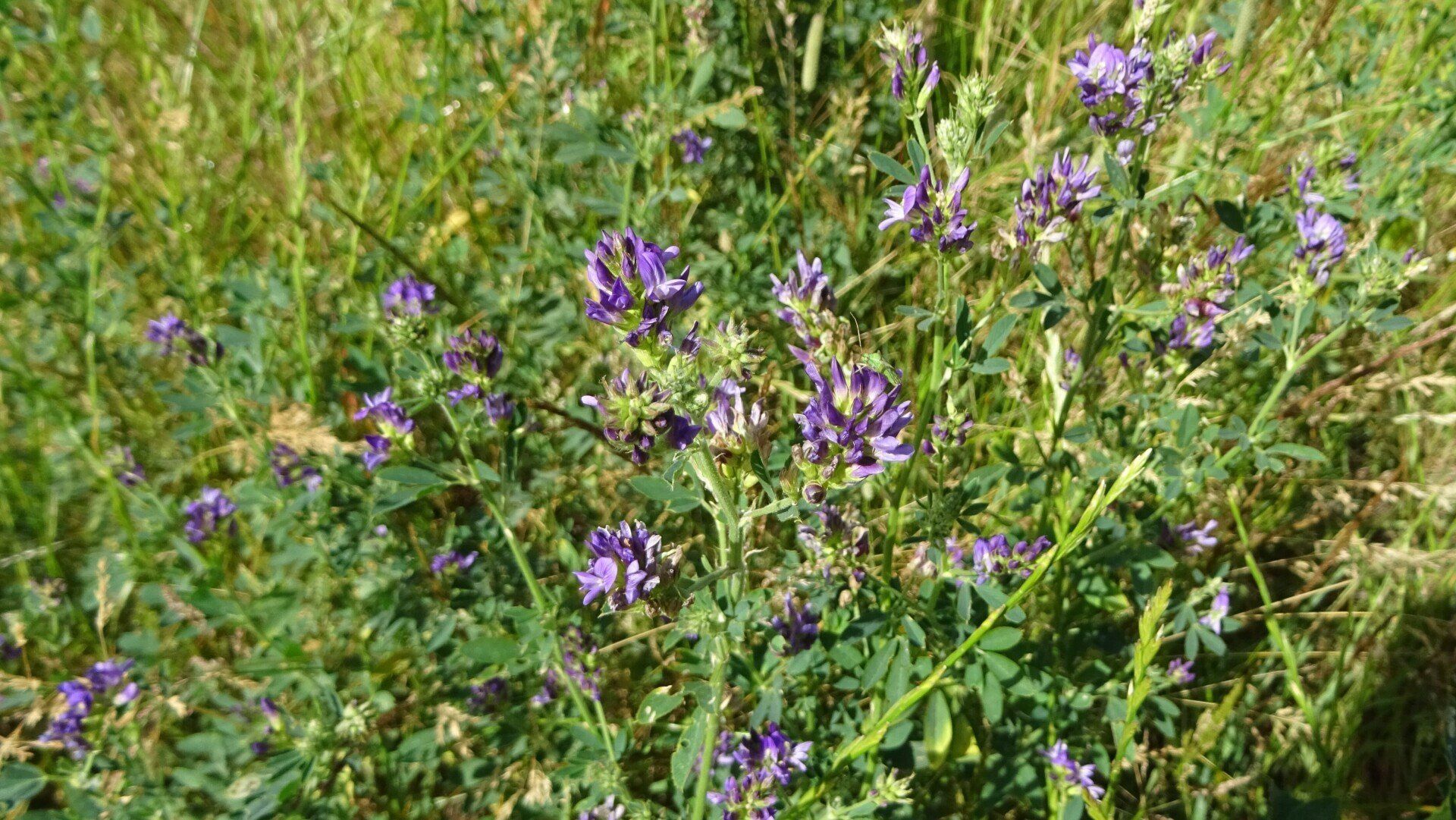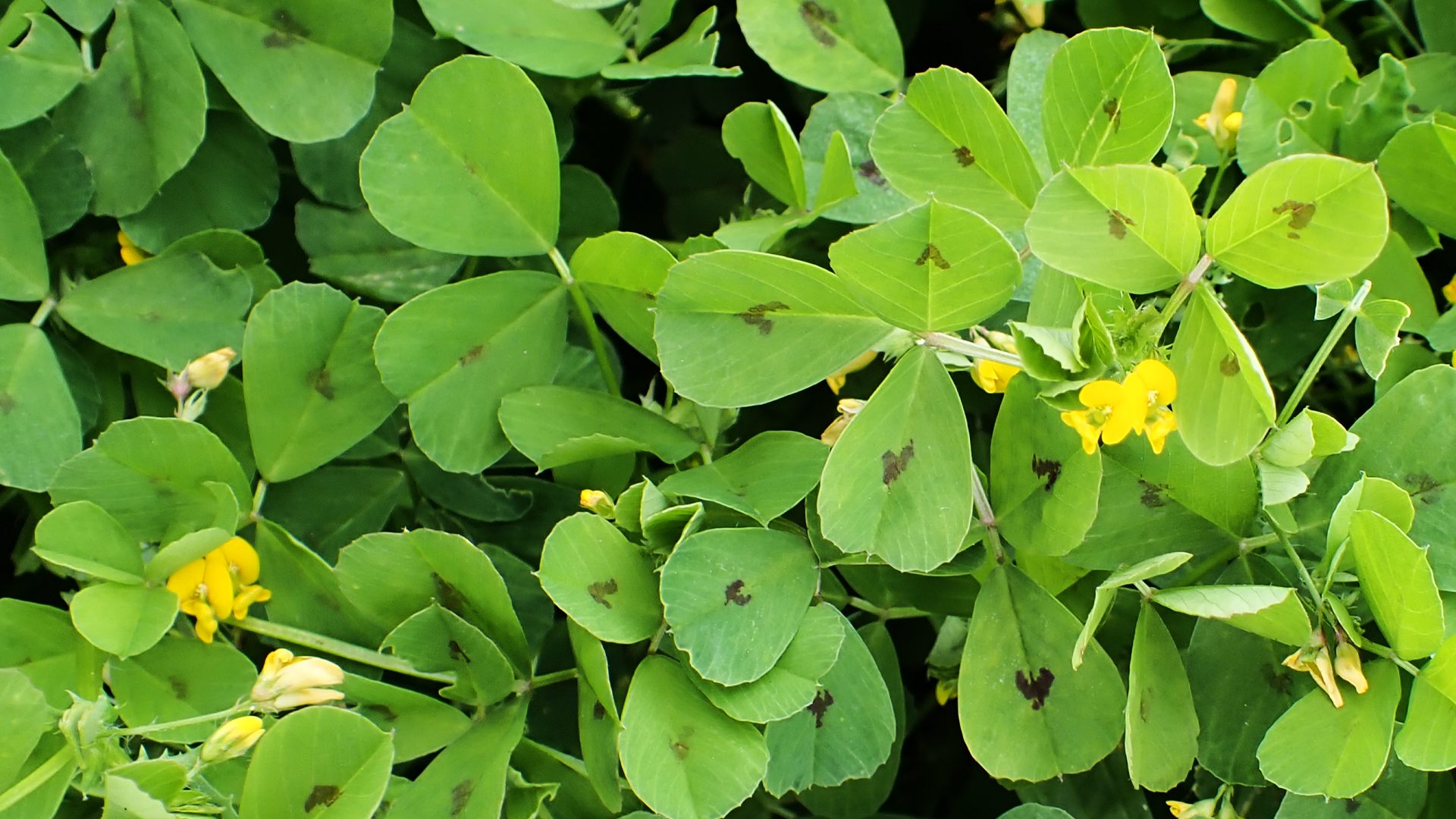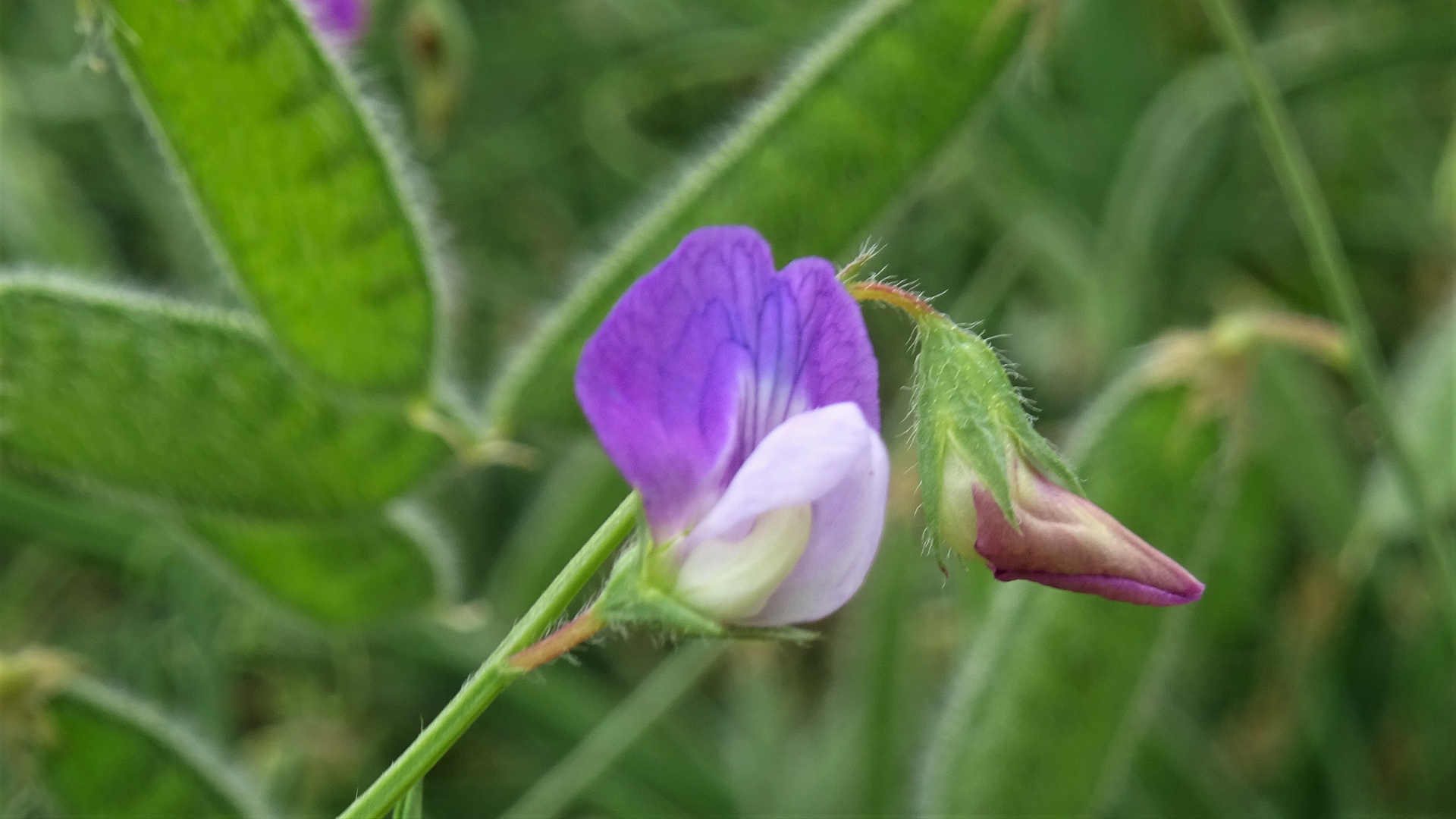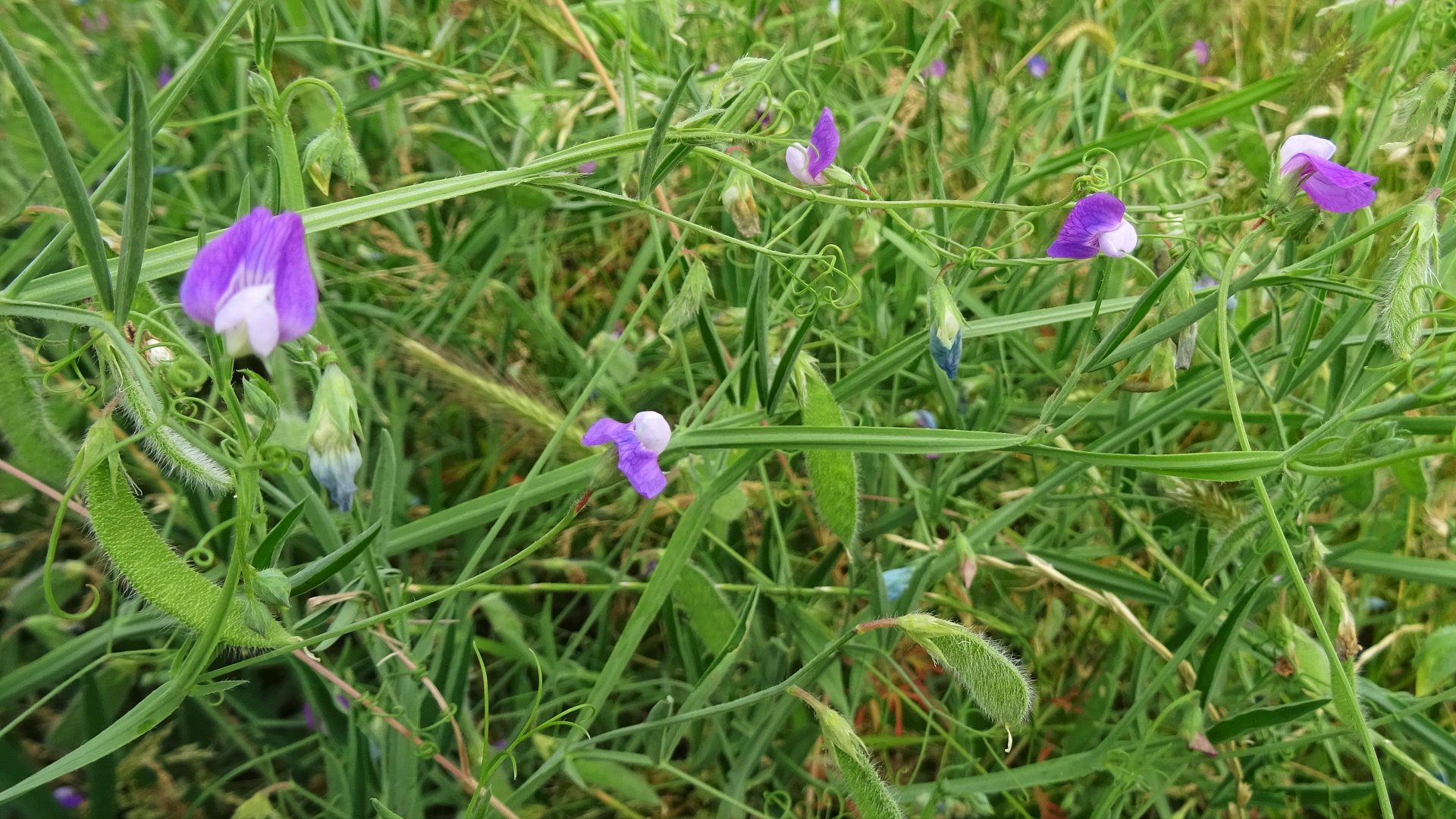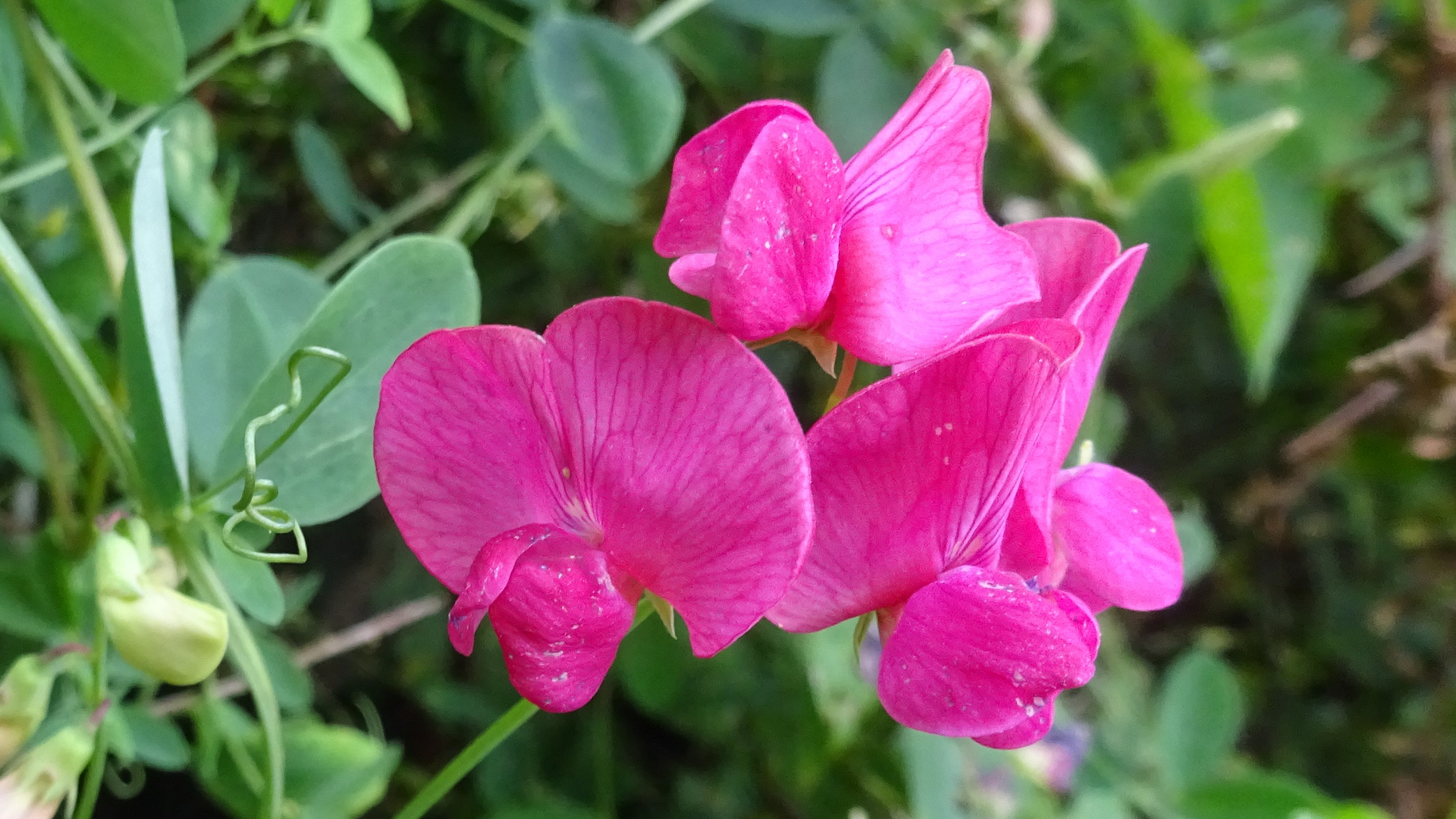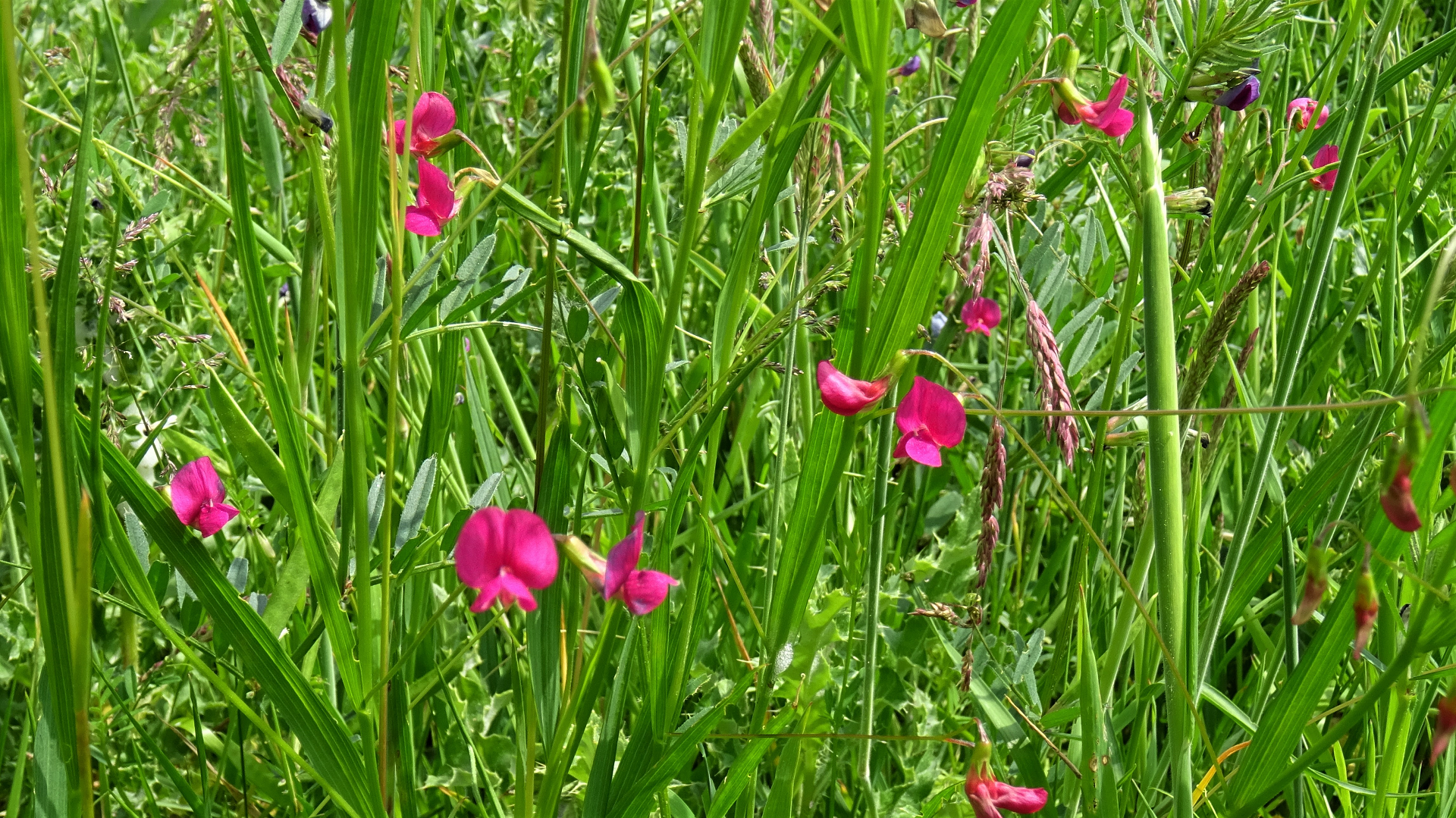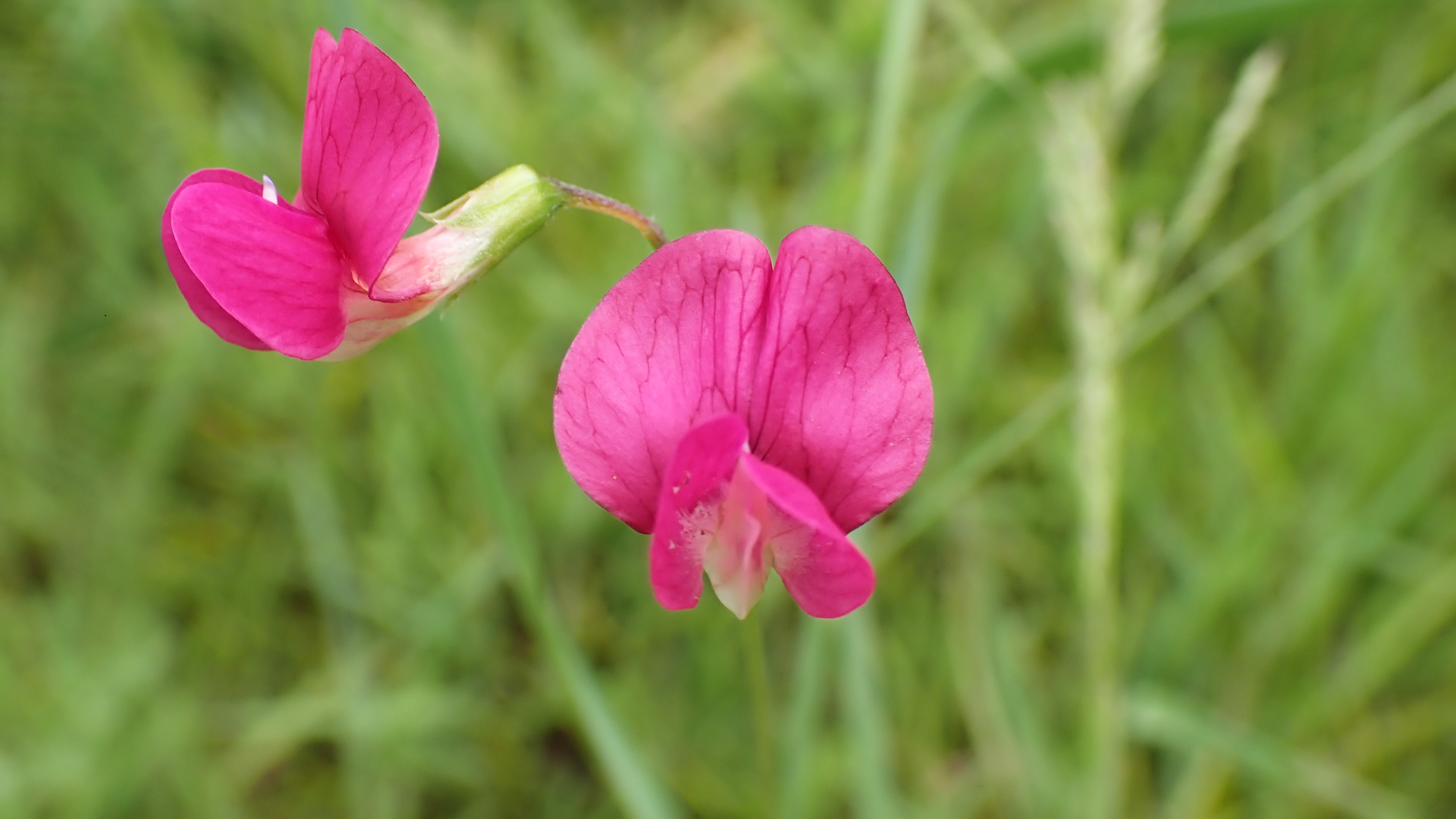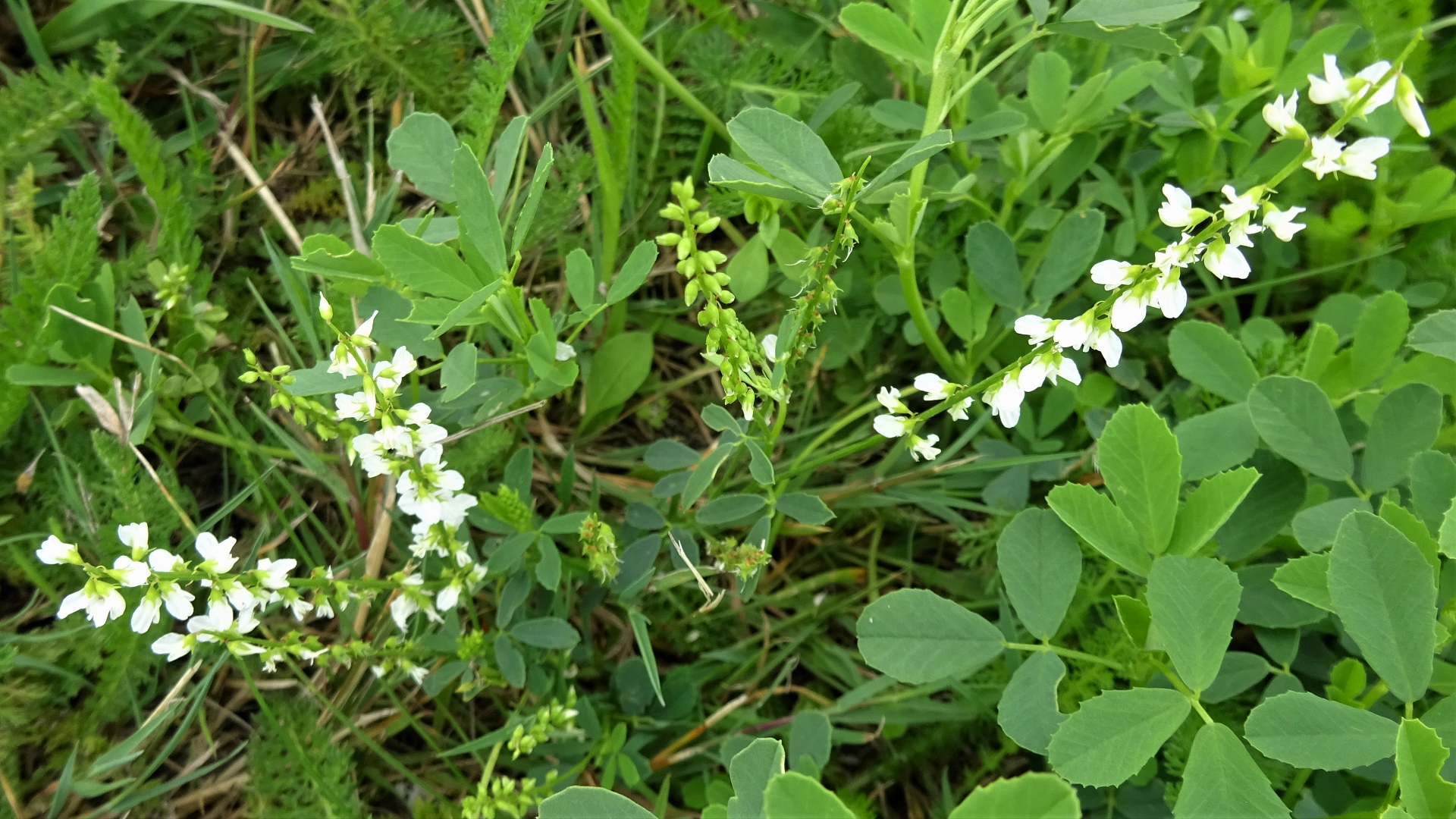WILDFLOWERS
PEA FAMILY
Lucerne Medicago sativa is a perennial with purple flowers (7-11 mm) that appear in June and July, Its trefoil leaves have toothed oval leaflets. This plant often appears around field edges where crops have been grown previously. It is grown as food for livestock animals. Sometimes known as Alfalfa.
Spotted Medick Medicago arabica has dark spotted trefoil leaves. Occasionally there may be a lack of spots in which case other details have to be examined. Leaflets are heart-shaped with a tiny point near the apex. The yellow flowers (5-7mm across) can be solitary, or several may be grouped together. The pod is spiralled with 4-7 turns.
Bithynian Vetch Vicia bithynica is named after Bithynia, an ancient kingdom located on the north coast of Anatolia in Turkey. Thank you to Essex Field Club botanist, Enid Barrie, and Dr. Ken Adams at the Essex Botanical Society, for verifying Brian Ecott's discovery. In Britain, this plant is usually seen near the sea and not usually in large quantities. It occasionally turns up inland, possibly due to warmer climate. This climbing or scrambling annual has distinctive purple and white flowers measuring 16-20mm across. The pods, 20-30mm, contain 4-8 seeds. There are distinctive toothed stipules. The bend in Foxburrow Road, close to where this is growing, suffers from dangerous black ice during winter, so is always heavily salted to prevent accidents. Some coastal plants, such as Danish scurvy-grass, have spread across Britain on roads that have been salted. How Bithynian Vetch seeds arrived here is unknown, but salty conditions might certainly have helped these plants flourish.
Fyfield Pea Lathyrus tuberosus is a fairly uncommon scrambling perennial with large pinkish flowers (up to 20mm). Two to seven flowers appear on short spikelets. The leaves consist of one pair of oval leaflets. A tendril is situated at the end of each leaf.
Grass Vetchling Lathyrus nissolia is a delicate annual which small crimson flowers (8-18mm across) and grass-like leaves. Flowers appear either singly or in pairs on a long slender stalk. Often found from May until July in grassland.
White Melilot Melilotus albus germinates in spring and white flowers appear from July until September. This annual is rarely found in Hainault Forest.
© hainaultforest.net. All rights reserved.


